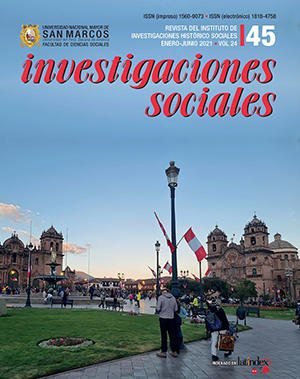The imilla of Paucartambo (Cusco) and the milieu incarnation: a case about transvestism and androgyny in the Andes
DOI:
https://doi.org/10.15381/is.n45.20198Keywords:
imilla, Qhapaq Qolla, Cusco, Paucartambo, transvestite, transgenderAbstract
The present article proposes that the imilla of Paucartambo, Cusco, is a transvestite and transgender character that constitute an interpretation of the theme of gender in the Andes. The question is: who is the imillla, and why is it traditionally embodied by a man? It is argued that the participation of the imilla in the performance of ritual and play and its symbolism, is essential in the Qhapaq Qolla and the fiesta of the Virgen del Carmen of Paucartambo, as representative of its cultural environment. As a liminal character, the imilla is unique in the fiesta; and it constitute a unique case in the transvestite and transgender representationes of the Andes, as far as we know. Finally, it is argued that as a transgender character, the imilla embodies the entire concept of Paucartambo as a nucleus, as it is narrated in the myths and performed during the guerrilla.
Downloads
Published
Issue
Section
License
Copyright (c) 2021 Yiftah Levin

This work is licensed under a Creative Commons Attribution 4.0 International License.
AUTHORS RETAIN THEIR RIGHTS:
a. Authors retain their trade mark rights and patent, and also on any process or procedure described in the article.
b. Authors retain their right to share, copy, distribute, perform and publicly communicate their article (eg, to place their article in an institutional repository or publish it in a book), with an acknowledgment of its initial publication in Investigaciones Sociales.
c. Authors retain theirs right to make a subsequent publication of their work, to use the article or any part thereof (eg a compilation of his papers, lecture notes, thesis, or a book), always indicating the source of publication (the originator of the work, journal, volume, number and date).













